10g
Showing 751–800 of 905 results
-

N-Alkyl(C12-16)-N-Benzyl-N,N-Dimethylammonium Chloride (Technical Grade)
$97.46 Add to cart View Product DetailsMolecular Formula : C17H30ClN
-

N-Benzoyl-DL-tyrosyl-N’,N’-dipropylamide
$718.46 Add to cart View Product DetailsMolecular Formula : C22 H28 N2 O3
-

N-Benzoylcytidine
$384.68 Add to cart View Product DetailsMolecular Formula : C16 H17 N3 O6
-

N-Benzylethylenediamine
$204.41 Add to cart View Product DetailsMolecular Formula : C9 H14 N2
-

N-Benzylformamide
$87.11 Add to cart View Product DetailsMolecular Formula : C8H9NO
-

N-Benzyloxycarbonyl-L-alanine
$67.28 Add to cart View Product DetailsMolecular Formula : C11 H13 N O4
-

N-Benzyloxycarbonylhydroxylamine
$297.56 Add to cart View Product DetailsMolecular Formula : C8 H9 N O3
-

N-Carbobenzoxy-L-threonine
$89.57 Add to cart View Product DetailsN-Carbobenzoxy-L-threonine
-

N-CBZ-L-phenylalanine p-Nitrophenyl Ester
$689.62 Add to cart View Product DetailsN-CBZ-L-phenylalanine p-Nitrophenyl Ester
-

N-Methoxy-N-methylacetamide
$58.01 Add to cart View Product DetailsN-Methoxy-N-methylacetamide
-

N-Methylnicotinamide
$103.44 Add to cart View Product DetailsN-Methylnicotinamide
-
![N-Vanillylnonanamide, [=Capsaicin (Synthetic)]](https://advatechgroup.com/wp-content/plugins/woocommerce/assets/images/xplaceholder.webp.pagespeed.ic.ANHCL-f_RA.webp)
N-Vanillylnonanamide, [=Capsaicin (Synthetic)]
$203.11 Add to cart View Product DetailsN-Vanillylnonanamide, [=Capsaicin (Synthetic)]
-

N,N-Dimethylformamide-d7, 99.5 Atom Percent D
$1,125.93 Add to cart View Product DetailsN,N-Dimethylformamide-d7, 99.5 Atom Percent D
-

N2-Benzyloxycarbonyl-L-ornithine
$176.81 Add to cart View Product DetailsMolecular Formula : C13H18N2O4
-

N4-Benzoyl-2’-deoxy-5’-O-DMT-cytidine 3’-CE Phosphoramidite
$422.63 Add to cart View Product DetailsMolecular Formula : C46H52N5O8P
-

N4-Benzoylcytosine
$111.26 Add to cart View Product DetailsMolecular Formula : C11H9N3O2
-
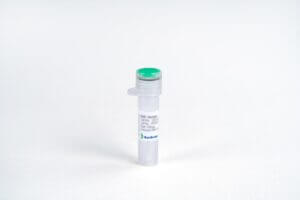
NAP-2/CXCL7, Human
$163.88 Add to cart View Product DetailsNeutrophil Activating Peptide 2 (NAP-2) is proteolytically processed carboxyl-terminal fragments of platelet basic protein (PBP) which is found in the alpha-granules of human platelets. NAP-2 is a member of the CXC chemokines. Similar to other ELR domain containing CXC chemokines such as IL-8 and the GRO proteins, NAP-2 has been shown to bind CXCR-2 and to chemoattract and activate neutrophils. Although CTAP-III, β-TG and PBP represent amino-terminal extended variants of NAP-2 and possess the same CXC chemokine domains, these proteins do not exhibit NAP-2 activity. Recently, it has been shown that the additional amino-terminal residues of CTAP-III masks the critical ELR receptor binding domain that is exposed on NAP-2 and may account for lack of NAP-2 activity.
-

Neutral Red
$70.61 Add to cart View Product DetailsNeutral Red
-

Neutral Red, Reagent, ACS
$102.53 Add to cart View Product DetailsNeutral Red, Reagent, ACS
-

NGF R, Human
$51.75 Add to cart View Product DetailsNGF Receptor, also known as Gp80-LNGFR, p75 ICD, CD271 and TNFRSF16, is a type I transmembrane protein belonging to the TNF receptor family. It is expressed by both neuronal and non-neuronal cells. Signaling through NGF Receptor has been shown to regulate gene expression, cell migration and death. A truncated NGF Receptor containing only the extracellular domain has been detected in plasma, amniotic fluid and urine, and acts as a potent NGF antagonist.
-

Nifedipine
$89.57 Add to cart View Product DetailsNifedipine
-

Nile Blue A
$159.14 Add to cart View Product DetailsNile Blue A
-

Nizatidine
$559.61 Add to cart View Product DetailsNizatidine
-

Noggin, Human(CHO-expressed)
$68.14 Add to cart View Product DetailsNoggin, also known as NOG, is a homodimeric glycoprotein that bindsto and modulates the activity of TGF-beta family ligands. It is expressed in condensing cartilage and immature chondrocytes. Noggin antagonizes bone morphogenetic protein (BMP) activities by blocking epitopes on BMPs needed for binding to their receptors. Noggin has been shown to be involved in many developmental processes, such as neural tube formation and joint formation. During development, Noggin diffuses through extracellular matrices and forms morphogenic gradients, regulating cellular responses dependent on the local concentration of the signaling molecule.
-

NT-4, Mouse
$86.25 Add to cart View Product DetailsNeurotrophin-4 (NT-4), also known as NT-5, is a neurotrophic factor structurally related to β-NGF, BDNF, and NT-3. Human NT-4 shares 48 – 52% aa sequence identity with human β-NGF, BDNF, and NT-3. Neurotrophins have six conserved cysteine residues that are involved in the formation of three disulfide bonds. NT-4 is expressed highest levels in prostate, lower levels in thymus, placenta, and skeletal muscle. NT-4 binds and induces receptor dimerization and activation of TrkB. NT-4 can signal through TrkB receptors and promotes the survival of peripheral sensory sympathetic neurons.
-

Nuclear Fast Red
$412.55 Add to cart View Product DetailsNuclear Fast Red
-

O-(Benzotriazol-1-yl)-N,N,N’,N’-tetramethyluronium Tetrafluoroborate
$100.91 Add to cart View Product DetailsMolecular Formula : C11H16BF4N5O
-
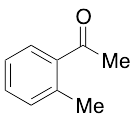
o-Acetyltoluene
$122.48 Add to cart View Product DetailsMolecular Formula : C9H10O
-

O-Benzylhydroxylamine Hydrochloride
$78.49 Add to cart View Product DetailsMolecular Formula : C7 H9 N O . HCl
-

Octafluorocyclopentene
$287.67 Add to cart View Product DetailsOctafluorocyclopentene
-
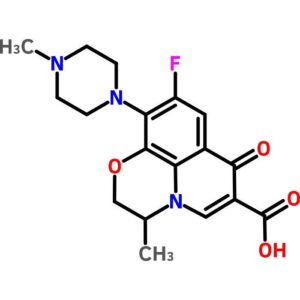
Ofloxacin
$377.99 Add to cart View Product DetailsOfloxacin
-

Orotic Acid Sodium Salt
$228.78 Add to cart View Product DetailsOrotic Acid Sodium Salt
-

OSM (209aa), Human
$86.25 Add to cart View Product DetailsOncostatin M (OSM) is a multifunctional cytokine, and belongs to Interleukin-6 (IL-6) subfamily, which also includes IL-11, leukemia inhibitory factor (LIF), ciliary neurotropic factor, cardiotrophin-1, and novel neurotropin-1. In vivo, OSM is secreted from activated T cells, monocytes, neutrophils, and endothelial cells. OSM is related to LIF, and shares a receptor with LIF in human. Human OSM can bind to gp130 and recruit OSM Receptor β or LIF Receptor β to form a ternary complex. OSM stimulates the growth of different types of cells, including megakaryocytes, fibroblasts, vascular endothelial cells, and T cells. OSM inhibits the proliferation of several cancer cell lines, such as solid tissue tumor cells, lung cancer cells, melanoma cells, and breast cancer cells.
-

OSM (227aa), Human
$86.25 Add to cart View Product DetailsOncostatin M (OSM) is a multifunctional cytokine, and belongs to Interleukin-6 (IL-6) subfamily, including IL-11, leukemia inhibitory factor (LIF), ciliary neurotropic factor, cardiotrophin-1, and novel neurotropin-1. In vivo, OSM is secreted from activated T cells, monocytes, neutrophils, and endothelial cells. OSM is related to LIF, and share a receptor with LIF in human. Human OSM can bind to gp130 and recruit OSM Receptor β or LIF Receptor β to form a ternary complex. OSM stimulates the growth of different types of cells, including megakaryocytes, fibroblasts, vascular endothelial cells, and T cells. On the other hand, OSM inhibits the proliferation of several cancer cell lines, such as solid tissue tumor cells, lung cancer cells, melanoma cells, and breast cancer cells.
-

OSM, Mouse
$86.25 Add to cart View Product DetailsOncostatin M (OSM) is a multifunctional cytokine, and belongs to Interleukin-6 (IL-6) subfamily, which also includes IL-11, leukemia inhibitory factor (LIF), ciliary neurotropic factor, cardiotrophin-1, and novel neurotropin-1. In vivo, OSM is secreted from activated T cells, monocytes, neutrophils, and endothelial cells. OSM is related to LIF, and shares a receptor with LIF in human. Human OSM can bind to gp130 and recruit OSM Receptor β or LIF Receptor β to form a ternary complex. OSM stimulates the growth of different types of cells, including megakaryocytes, fibroblasts, vascular endothelial cells, and T cells. OSM inhibits the proliferation of several cancer cell lines, such as solid tissue tumor cells, lung cancer cells, melanoma cells, and breast cancer cells.
-

OSM, Mouse(HEK 293-expressed)
$86.25 Add to cart View Product DetailsOncostatin M (OSM) is a multifunctional cytokine, and belongs to Interleukin-6 (IL-6) subfamily, which also includes IL-11, leukemia inhibitory factor (LIF), ciliary neurotropic factor, cardiotrophin-1, and novel neurotropin-1. In vivo, OSM is secreted from activated T cells, monocytes, neutrophils, and endothelial cells. OSM is related to LIF, and shares a receptor with LIF in human. Human OSM can bind to gp130 and recruit OSM Receptor β or LIF Receptor β to form a ternary complex. OSM stimulates the growth of different types of cells, including megakaryocytes, fibroblasts, vascular endothelial cells, and T cells. OSM inhibits the proliferation of several cancer cell lines, such as solid tissue tumor cells, lung cancer cells, melanoma cells, and breast cancer cells.
-

p-Anisidine
$148.35 Add to cart View Product DetailsMolecular Formula : C7 H9 N O
-

p-Naphtholbenzein
$154.54 Add to cart View Product Detailsp-Naphtholbenzein
-

Palladium on Charcoal, 5 Percent, Catalyst, Powder
$346.13 Add to cart View Product DetailsPalladium on Charcoal, 5 Percent, Catalyst, Powder
-

PD-L1 Fc Chimera, Mouse
$34.50 Add to cart View Product DetailsProgrammed death-ligand 1 (PD-L1) also known as cluster of differentiation 274 (CD274) or B7 homolog 1 (B7-H1), is a protein that in humans is encoded by the CD274 gene. PD-L1 is a 40 kDa type 1 transmembrane protein that has been speculated to play a major role in suppressing the immune system during particular events such as pregnancy, tissue allografts, autoimmune disease and other disease states such as hepatitis. Normally the immune system reacts to foreign antigens where there is some accumulation in the lymph nodes or spleen which triggers a proliferation of antigen-specific CD8+ T cell. The formation of PD-1 receptor / PD-L1 or B7.1 receptor /PD-L1 ligand complex transmits an inhibitory signal which reduces the proliferation of these CD8+ T cells at the lymph nodes and supplementary to that PD-1 is also able to control the accumulation of foreign antigen specific T cells in the lymph nodes through apoptosis which is further mediated by a lower regulation of the gene Bcl-2. PD-L1 binds to its receptor, PD-1, found on activated T cells, B cells, and myeloid cells, to modulate activation or inhibition.
-
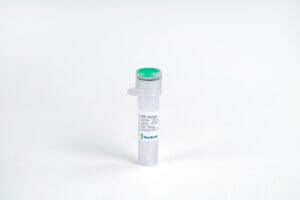
PDGF-AA, Mouse
$90.56 Add to cart View Product DetailsPlatelet-Derived Growth Factor-AA (PDGF-AA) is one of five dimers (PDGF-AA, AB, BB, CC, and DD) formed by 4 different PDGF subunits. In chemical terms, platelet-derived growth factor is a dimeric glycoprotein composed of two A (-AA) or two B (-BB) chains or a combination of the two (-AB). The dimeric isoforms PDGFAA, AB and BB are differentially expressed in various cell types, and their effects are mediated through two distinct receptors termed α and β. Differences exist in isoform binding to each receptor. Ingeneral, PDGF isoforms are potent mitogens for connective tissue cells including dermal fibroblasts, glial cells, arterial smooth muscle cells and some epithelial andendothelial cells. In addition to its activity as a mitogen, PDGF is chemotactic for fibroblasts, smooth muscle cells, neutrophils and mononuclear cells. PDGF-AA plays a significant role in blood vessel formation (angiogenesis).
-

PDGF-BB, Bovine
$103.50 Add to cart View Product DetailsPlatelet-derived growth factor (PDGF) presenting in serum but absent from plasma was first discovered in an animal study by Lynch and co-workers in the late 1980s. It is a disulfide-linked dimer consisting of two peptides-chain A and chain B. PDGF has three subforms: PDGF-AA, PDGF-BB, and PDGF-AB. It is involved in many biological processes, including hyperplasia, embryonic neuron development, chemotaxis, and respiratory tubule epithelial cell development. The function of PDGF is mediated by two receptors (PDGFR-α and PDGFR-β).
-

PDGF-BB, Human
$103.50 Add to cart View Product DetailsPlatelet-derived growth factor (PDGF) presenting in serum but absent from plasma was first discovered in animal study by Lynch and co-workers in the late 1980s. It is a disulfide-linked dimer consisting of two peptides-chain A and chain B. PDGF has three subforms: PDGF-AA, PDGF-BB, PDGF-AB. It is involved in a number of biological processes, including hyperplasia, embryonic neuron development, chemotaxis, and respiratory tubule epithelial cell development. The function of PDGF is mediated by two receptors (PDGFR-α and PDGFR-β).
-

PDGF-BB, Human
$155.25 Add to cart View Product DetailsPlatelet-Derived Growth Factor-BB (PDGF-BB) is one of five dimers (PDGF-AA, AB, BB, CC, and DD) formed by 4 different PDGF subunits. In vivo, PDGF-BB is mainly produced in heart and placenta, and predominantly expressed by osteoblasts, fibroblasts, smooth muscle cells, and glial cells. An inactive precursor of PDGF-BB is produced in the endoplasmic reticulum and then activated by a proprotein convertase after secretion. PDGF-BB functions in a paracrine manner and promotes organogenesis, human skeletal development, and wound healing. PDGF-BB also promotes angiogenesis, particularly in the presence of Fibroblast Growth Factor basic. Therefore, PDGF-BB and its related pathways are potential pharmacological targets.
-

PDGF-BB, Human (P. pastoris-expressed)
$94.88 Add to cart View Product DetailsPlatelet-Derived Growth Factor-BB (PDGF-BB) is one of five dimers (PDGF-AA, AB, BB, CC, and DD) formed by 4 different PDGF subunits. In vivo, PDGF-BB is mainly produced in heart and placenta, and predominantly expressed by osteoblasts, fibroblasts, smooth muscle cells, and glial cells. An inactive precursor of PDGF-BB is produced in the endoplasmic reticulum and then activated by a proprotein convertase after secretion. PDGF-BB functions in a paracrine manner and promotes organogenesis, human skeletal development, and wound healing. PDGF-BB also promotes angiogenesis, particularly in the presence of Fibroblast Growth Factor basic. Therefore, PDGF-BB and its related pathways are potential pharmacological targets.
-

PDGF-BB, Mouse
$86.25 Add to cart View Product DetailsPlatelet-Derived Growth Factor-BB (PDGF-BB) is one of five dimers (PDGF-AA, AB, BB, CC, and DD) formed by 4 different PDGF subunits. In vivo, PDGF-BB is mainly produced in heart and placenta, and predominantly expressed by osteoblasts, fibroblasts, smooth muscle cells, and glial cells. An inactive precursor of PDGF-BB is produced in the endoplasmic reticulum and then activated by a proprotein convertase after secretion. PDGF-BB functions in a paracrine manner and promotes organogenesis, human skeletal development, and wound healing. PDGF-BB also promotes angiogenesis, particularly in the presence of Fibroblast Growth Factor basic. Therefore, PDGF-BB and its related pathways are potential pharmacological targets.
-

PDGF-BB, Rat
$86.25 Add to cart View Product DetailsPlatelet-Derived Growth Factor-BB (PDGF-BB) is one of five dimers (PDGF-AA, AB, BB, CC, and DD) formed by 4 different PDGF subunits. In vivo, PDGF-BB is mainly produced in heart and placenta, and predominantly expressed by osteoblasts, fibroblasts, smooth muscle cells, and glial cells. An inactive precursor of PDGF-BB is produced in the endoplasmic reticulum and then activated by a proprotein convertase after secretion. PDGF-BB functions in a paracrine manner and promotes organogenesis, human skeletal development, and wound healing. PDGF-BB also promotes angiogenesis, particularly in the presence of Fibroblast Growth Factor basic. Therefore, PDGF-BB and its related pathways are potential pharmacological targets.
-

PDGF-CC, Human
$68.14 Add to cart View Product DetailsPlatelet-Derived Growth Factor (PDGF) is a potent mitogen for a wide range of cell types including fibroblasts, smooth muscle, connective tissue, bone and cartilage cells, and some blood cells. The PDGF is involved in a number of biological processes, including hyperplasia, chemotaxis, embryonic neuron development, and respiratory tubule epithelial cell development. The PDGF family consists of proteins derived from four genes (PDGF -A, -B, -C, and -D) that form four disulfide-linked homodimers (PDGF-AA, -BB, -CC, and -DD) and one heterodimer (PDGF-AB).
-

PDGF-DD, Human
$86.25 Add to cart View Product DetailsPDGF-DD, also known as platelet-derived growth factor D, IEGF and SCDGFB, is asecreted growth factor belonging to the PDGF/VEGFfamily. It is highly expressed in the heart, pancreas, adrenal glands and ovary. PDGF-DD forms functional homodimers that bind and induce PDGF Rβ homodimers and PDGF Rα/β heterodimers that promote intracellular signaling. This plays an important role in the regulation of cell differentiation, migration and survival. It has also been reported that PDGF-DD can induce monocyte and macrophage recruitment, increase interstitial pressure and facilitate wound healing.
-
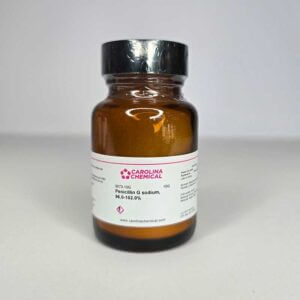
Penicillin G Sodium – 10G
$23.92 Add to cart View Product DetailsCAS Number 69-57-8 Linear Formula C16H17N2NaO4S Molecular Weight 356.37






